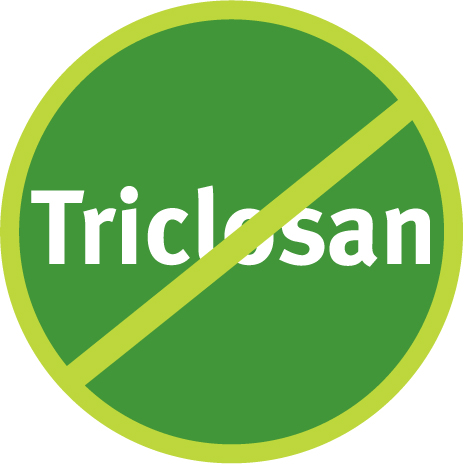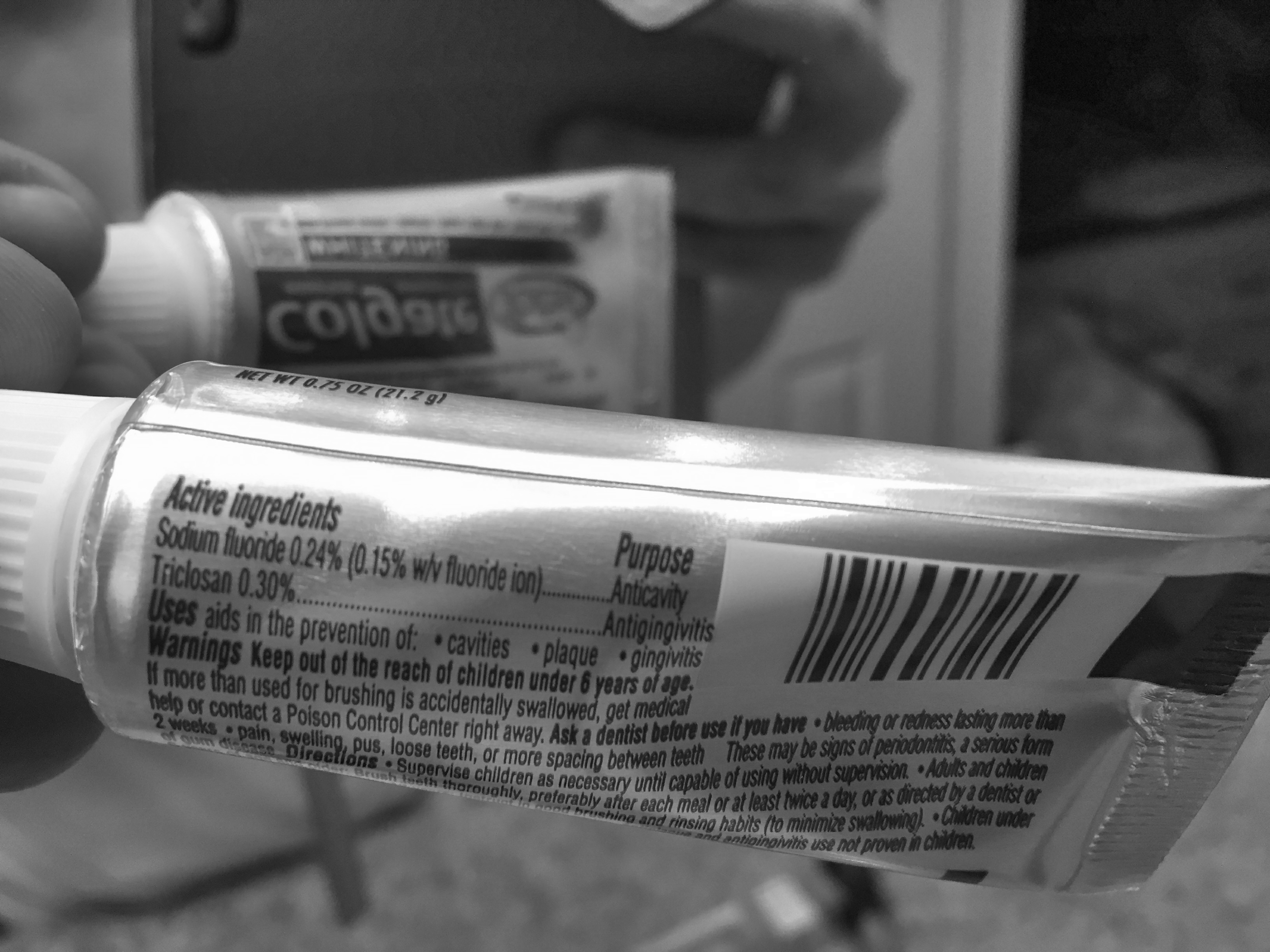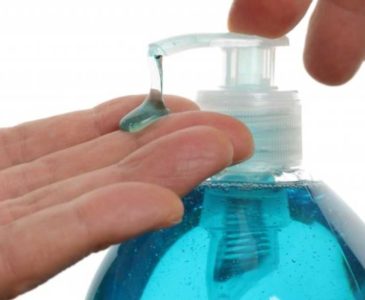As a microbiologist and a health advocate I am so glad that FDA finally addmitted that not only there is not enough evidence that antibacterial soap works better than regular soap and water but that it actually can cause health concerns and may not be that safe to use after all.1
Here are five things you need to know about triclosan effect on microbiome:
- Antimicrobial agents, like triclosan, can not only disturb the balance of the human microbiome but also accumulate in our environment – in rivers, lakes, seas and earth. Once there, triclosan effects local microbiomes of those environments. It’s a well known fact by now that disturbed and disbalanced microbiome can lead to a number of health complications like metabolic syndrome, irritable bowel syndrome (IBS), inflammatory bowel disease (IBD), mental behaviour disorders and others.

- Triclosan, as an antibacterial agent, can influence the balance of human microbiome not only on our skin but also in the gut. A few studies demosntrated the microbiome of zebrafish Brachydanio rerio and fathead minnows Pimephales promelas exposed to triclosan was altered and restored after triclosan was removed2,3. Another study looked at the microbiome of river biofilms and found than even very short exposure to tiny triclosan concentrations in those waters lead to irriversable disturbances in the microbiota composition4.
- Triclosan can cause antibiotic resistannce in some bacteria. Recent study revealed that prolonged use of triclosan caused ampicillin and/or ciprofloxacin resistance in such pathogenic bacteria as Staphylococcus aureus and Escherichia coli5.
- Exposure of triclosan in prenatal, perinatal and postnatal periods may have even more detrimental effect on microbiota and future development of nervous and immune systems as demonstrated by Cox and others6.
- So what about such toothpastes like Colgate, which consists of 0.3% triclosan? Why is it not ok to use it for washing hands but it’s ok to put it in your mouth? Toothe paste companies argue that it does more good in he mouth than harm according to
 some studies that showed triclosan ability to help with gingivitis. There are quite a few studies like this recent study, demonstrating that there was a reduction of periodontal pathogens like Aggregatibacter actinomycetemcomitans and Fusobacterium nucleatum found on teeth by the whole 21% in paptients using triclosan containing tooth paste vs control group. However the result with two other pathogenic bacteria Tannerella forsythia and Porphyromonas gingivalis showed variable results. The conclusion of the study was: «Within the limitations of the study, these data suggest that the use of triclosan/copolymer toothpaste significantly slowed the progression of periodontitis…”7. The study design of this project was not perfect. Most of the patients participating in the study had cardiovascular disorders and were up to 75 years of age. Interestingly, they had to have a minimum of 12 uncrowned teeth, so the rest teeth could not be present at all. Now decision is yours to use or not to use the triclosan containing tooth paste.
some studies that showed triclosan ability to help with gingivitis. There are quite a few studies like this recent study, demonstrating that there was a reduction of periodontal pathogens like Aggregatibacter actinomycetemcomitans and Fusobacterium nucleatum found on teeth by the whole 21% in paptients using triclosan containing tooth paste vs control group. However the result with two other pathogenic bacteria Tannerella forsythia and Porphyromonas gingivalis showed variable results. The conclusion of the study was: «Within the limitations of the study, these data suggest that the use of triclosan/copolymer toothpaste significantly slowed the progression of periodontitis…”7. The study design of this project was not perfect. Most of the patients participating in the study had cardiovascular disorders and were up to 75 years of age. Interestingly, they had to have a minimum of 12 uncrowned teeth, so the rest teeth could not be present at all. Now decision is yours to use or not to use the triclosan containing tooth paste.
So here you are a few more reasons to stay away from triclosan and other antibacterial substances containing products. In the century of germophobia and obsession with everything sterile we need to finally make a pause and think again: it really is enough to use regular toxin free soap for washing hands and use cloth and water for cleaning the house. It is definitely healthier: win for you, win for your microbiome (which is anoher win for you) and win for the environment. Oh and it is usually cheaper too.
References:
- Commissioner, O. of the. Consumer Updates – Antibacterial Soap? You Can Skip It — Use Plain Soap and Water. Available at: http://www.fda.gov/ForConsumers/ConsumerUpdates/ucm378393.htm. (Accessed: 9th September 2016)
- Gaulke, C. A., Barton, C. L., Proffitt, S., Tanguay, R. L. & Sharpton, T. J. Triclosan Exposure Is Associated with Rapid Restructuring of the Microbiome in Adult Zebrafish. PLOS ONE 11, e0154632 (2016).
- Narrowe, A. B. et al. Perturbation and restoration of the fathead minnow gut microbiome after low-level triclosan exposure. Microbiome 3, (2015).
- Lawrence, J. R. et al. Resilience and recovery: The effect of triclosan exposure timing during development, on the structure and function of river biofilm communities. Aquat. Toxicol. 161, 253–266 (2015).
- Wesgate, R., Grasha, P. & Maillard, J.-Y. Use of a predictive protocol to measure the antimicrobial resistance risks associated with biocidal product usage. Am. J. Infect. Control 44, 458–464 (2016).
- Cox, L. M. et al. Altering the Intestinal Microbiota during a Critical Developmental Window Has Lasting Metabolic Consequences. Cell 158, 705–721 (2014).
- Cullinan, M. P. et al. The Influence of Triclosan on Biomarkers of Cardiovascular Risk in Patients in the Cardiovascular and Periodontal Study (CAPS): A Randomized Controlled Trial. J. Periodontol. 86, 847–855 (2015).


Trackbacks/Pingbacks